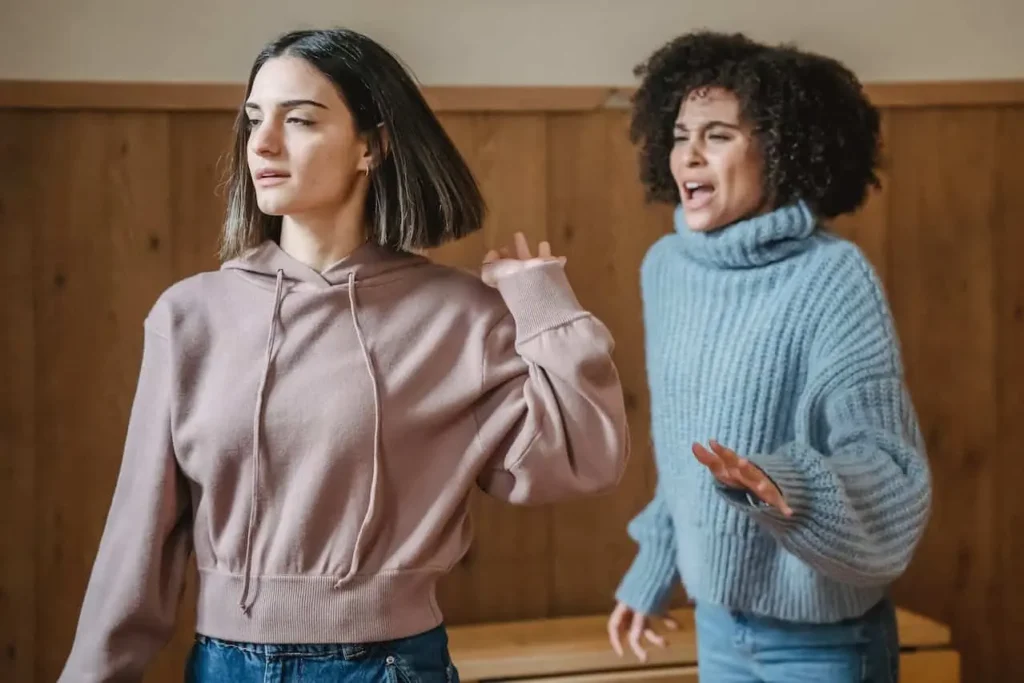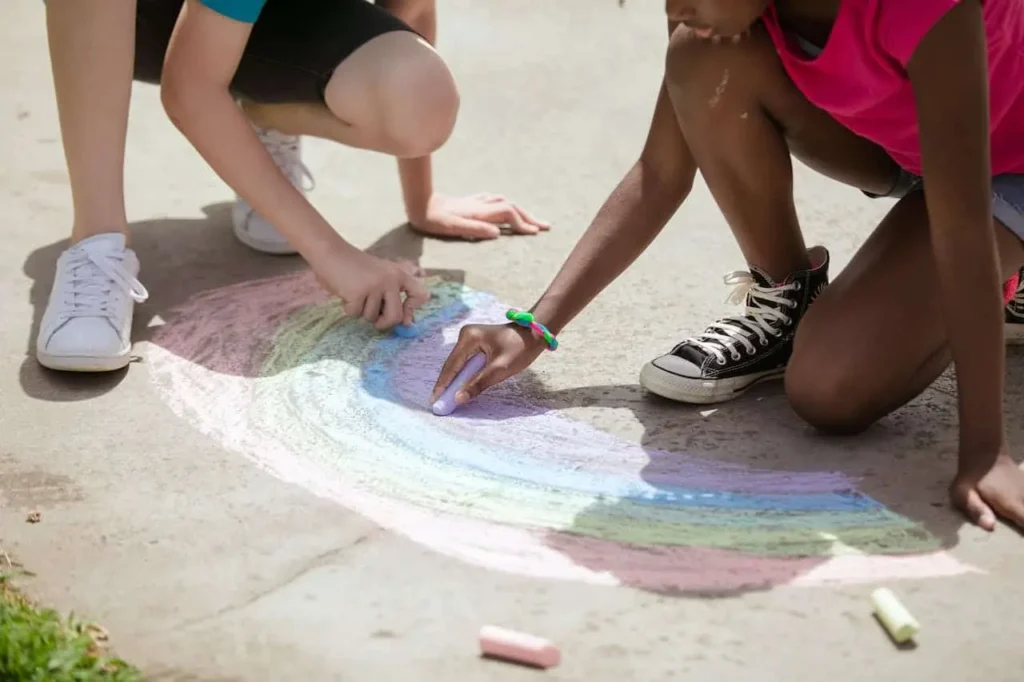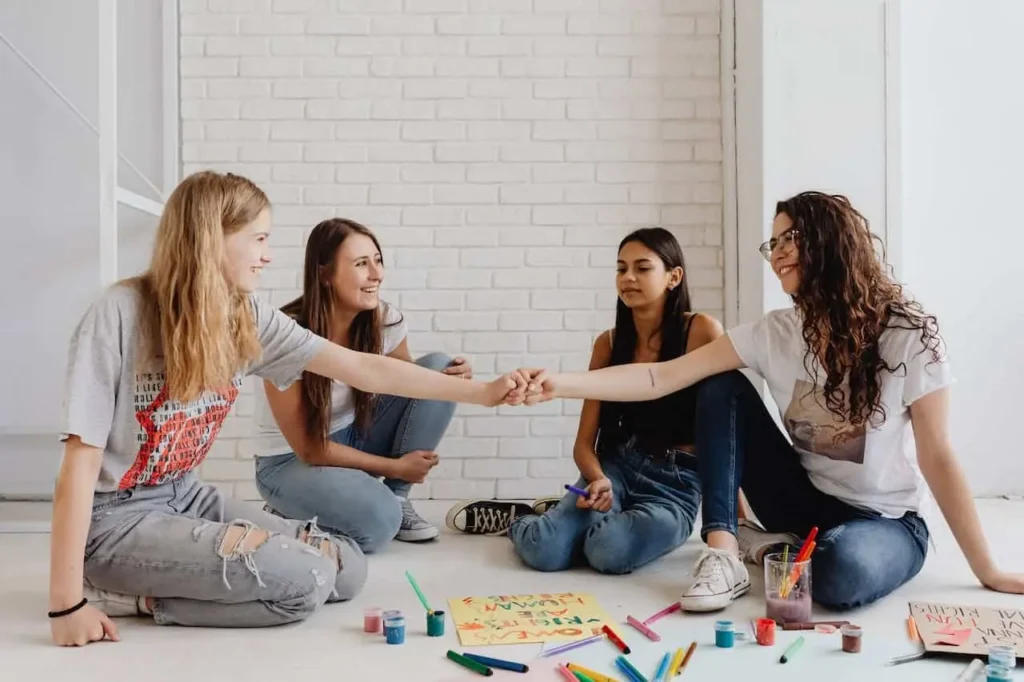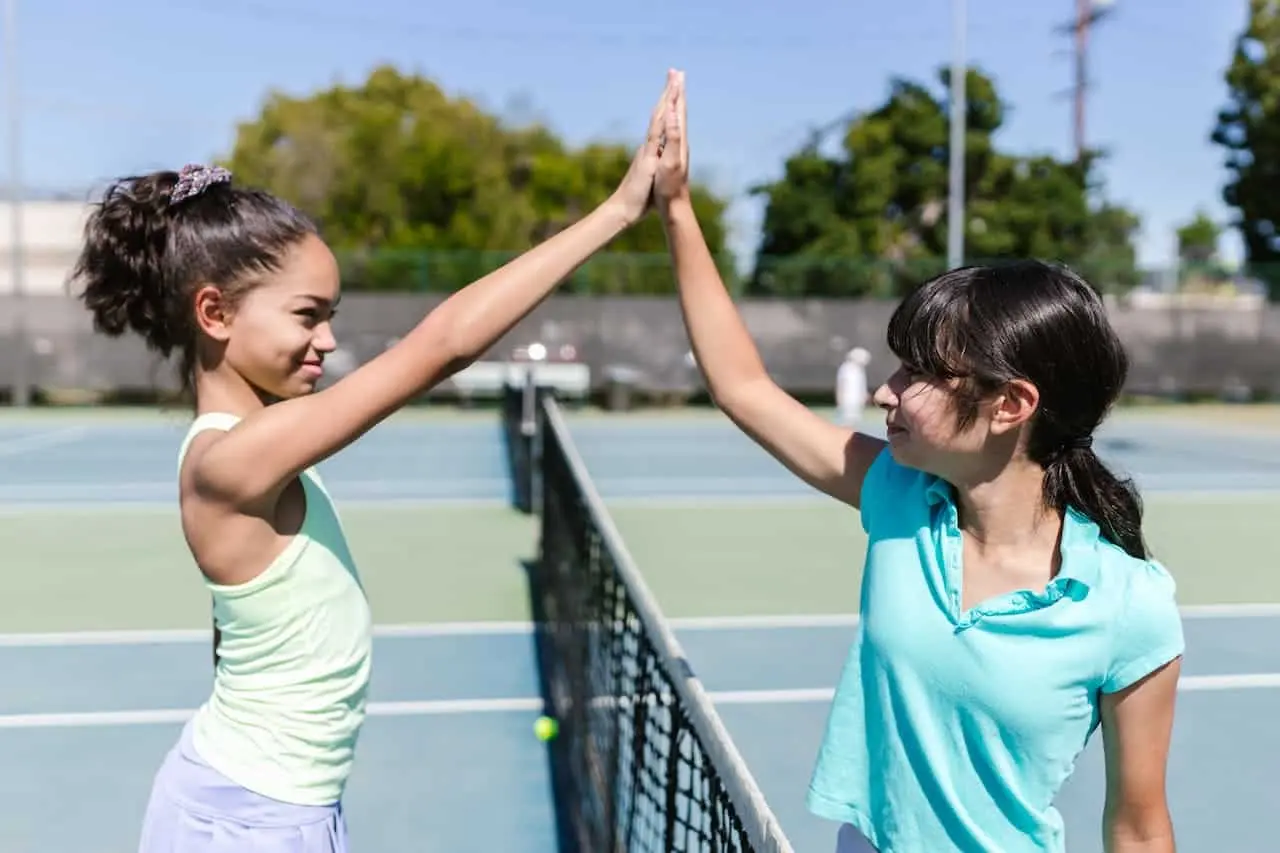Resolution of what? Conflict! It means conflicts occur in our lives. That’s why we learn how to resolve it. The problem is the only reason for the solution to exist. If you don’t face a problem, you find the solution to what? If there is no night, what does the day mean?
So, conflicts are not just a normal part of life, but these are actually the opportunities scattered around our lives to teach us important life skills.
In this article, we will discuss simple and easy-to-fit conflict resolution activities for teens and kids to learn a very important social skill.
What conflict resolution activities for teens and kids are used for?

These activities simplify the process of resolving disputes or disagreements between individuals or groups in a peaceful and constructive way. These activities are actually focused on helping teens learn how to find a specific solution for a specific problem that satisfies all parties involved.
Importance of Teaching Conflict Resolution to Teens
Teenage years are the most important years in life because of the rapid transitions in various aspects of life. Adolescence is a crucial period for personal development, personality development, social interactions, and the formation of lifelong habits.
Key Principles of Conflict Resolution
Conflict resolution involves a set of principles and skills that individuals use to manage and resolve conflicts effectively.
There are four basic principles involved in the process of conflict resolution:
- Effective communication
- Empathy
- Compassion
- Collaboration
Conflict resolution skills are based on the following:
- Ability to fully concentrate, understand, and respond to other people.
- Expressing thoughts and feelings clearly and assertively without aggression.
- Ability to see a situation from someone else’s point of view.
These skills and principles lay the foundation for effective conflict resolution among teens and kids. By mastering these key elements, they can navigate conflicts in a constructive and respectful manner. Thus, they can contribute to our society by beautifying relationships and friendships.
14 Conflict resolution activities for teens and kids

When teens perform Conflict resolution activities, they unconsciously develop important life skills. These life skills lead them towards success. They start to face life challenges confidently. These skills come in handy in every aspect of life and at every turn.
Your role, as a parent or guardian, is to emphasize its importance and help teenagers focus on the outcome.
Here’s a list of 14 practical and easy-to-perform conflict resolution activities for teens:
Role-Playing Scenarios:
Role-play enables young people to act out different roles. In it, the young people play a role aimed at what skill they want to learn or what they want to be.
For example, if teens experience simulated conflict repeatedly, they will react expertly when faced with real conflict. This provides a safe space for practicing conflict resolution techniques.
Active Listening Exercises:
This involves learning to listen to the feelings behind the words. One important activity to enhance active listening is “reflexive listening.”
One person speaks about a topic for 3 to 5 minutes, and the other listens attentively.
After the speaker finishes, the listener reflects back on what they heard without adding their own interpretation.
Conflict Resolution Worksheets:
It is important to target a single point to get the desired results. Conflict resolution worksheets are specially structured for resolving conflicts.
These specifically designed worksheets guide teens through conflict analysis, emotion identification, and solution brainstorming. These worksheets are far more beneficial than our own homemade conflict resolution formulas for teens.
Mindful Breathing:
You can incorporate four mindful breathing techniques, whichever fits you best.
- Deep Belly Breathing:
Sit or lay comfortably. Inhale deeply through your nose, letting your diaphragm expand. Exhale gently through your lips, allowing your tummy to descend.
- 4-7-8 Breathing:
Softly inhale through your nose to a mental count of four. Hold your breath for 7 counts, then exhale completely through your mouth for 8.
- Box Breathing (Square Breathing):
It involves inhaling for 4 counts, holding your breath for 4 counts, then exhaling for 4 counts. Pause without breathing for four counts.
- Alternate Nostril Breathing (Nadi Shodhana):
Use your right thumb to close your right nostril and inhale through your left. Close your left nostril with your right ring finger, then release it. Exhale from your right nostril. Inhale via the right nostril, then close it and exhale through the left nostril. Repeat the process.
These conflict resolution activities for teens help them manage stress and stay calm during conflicts.
Empathy-building Activities:
Activities like active listening help teens understand what others think. And when they learn to listen to the emotions behind the words, they begin to see things from a different perspective.
This enhances emotional intelligence, fosters compassion, and improves the ability to connect with others—crucial elements in peaceful conflict resolution.
Collaborative Art Projects:

Teamwork teaches compromise—the key to conflict resolution. The art of collaboration is not only the skill of conflict resolution but also of building positive relationships with peers. It can be planning, scripting, filming, and editing short animated videos as a group, or it can be about writing, illustration, and graphic design.
Problem-Solving Games:
Games like Puzzle Race, Treasure Hunt, Simon Says or Lego Building Challenges help teens develop problem-solving skills in the context of conflict resolution. These are seemingly fun methods, but they are packed with many physical and mental benefits for the youth from within.
Role Reversal:
Teens switch roles with each other to understand the responsibilities and characteristics associated with that role. It can be a teacher for a day, parent-child role play, sibling swap, or parenting simulation. This conflict resolution activity is focused on empathy and helps teens understand different viewpoints.
Restorative Circles:
In restorative justice practices, participants sit in a circle and take turns speaking and listening to each other. During a circle, teens switch roles with the person who caused harm, speaking from the perspective of the victim and vice versa. This is the best exercise to understand other’s experiences and to see things from a different angle.
Mediation Practice:
Mediation is like being a middle person who helps solve problems between people. It’s like being a peacekeeper. Teenagers learn how to come up with fair solutions that make both parties happy. Teenagers can play an effective role as mediators in:
- Helping friends resolve a fight
- Solving classroom disputes
- Assisting siblings in conflict
- Mediating group projects
- Resolving issues in sports teams
Debates:
Debates teach teens to present and defend their opinions on specific topics. These also belong to the leadership qualities of teens. Effective communication skills are also a very important by-product of this activity. Play your role and encourage your young adults to participate in debates because they provide a platform to practice respectful disagreement and find common ground.
Reflective Journaling:
An effective activity to develop self-awareness—reflective journaling involves teens expressing their thoughts, feelings, and reflections on their experiences. This activity especially helps teens understand their reactions to conflicts. By regularly journaling, teens can enhance their emotional growth.
Conflict Resolution Board Games:
Board games designed around conflict resolution principles provide a fun and interactive way for teens to learn and apply these skills. These games often involve scenarios that require strategic thinking, negotiation, and compromise. Playing such games helps teens develop problem-solving abilities in a relaxed and enjoyable setting.
Video Analysis:
It is human nature to go deeper into something when he sees it over and over again. Thus, the ways to better react to a problem are automatically instilled in his mind.
Video analysis involves reviewing recorded scenarios or role-plays of conflicts. When teens observe their own interactions or those of others, it is an opportunity for reflection and analysis. They tend to identify areas of improvement, learn from real-life examples, and refine their conflict resolution skills.
These activities aim to provide teens with practical experiences that enhance their conflict resolution skills in a variety of contexts.
The role of emotional intelligence in conflict resolution
Emotional intelligence enables teenagers to understand and manage their own emotions and the emotions of others. It creates a sense of responsibility for their actions because they know how to react in a certain situation. It provides the basis for creativity, which is the basic element of problem-solving skills.
Emotional intelligence helps resolve conflicts for teens in the following ways:
- Recognizing emotions during conflicts
- Managing emotional responses in conflict
- Leading to creative and better solutions
Related article: 10 Focused Emotional Regulation Activities
Peer Relationships and Conflict Resolution Activities
Peer relationships are an essential part of a teenager’s life, but conflicts among peers can arise due to various reasons. In their teenage years of life, they must learn how to navigate these conflicts in healthy ways. So this skill will serve them at every moment in every field of life.
Here are some examples of conflict resolution activities specifically tailored for teens:
- Role play is the best activity to practice and master conflict resolution skills. Create scenarios of common peer conflicts and have teens take on different roles and act out how they would resolve the conflict.
- Present teens with a hypothetical conflict and challenge them to come up with creative solutions together. For example, siblings or roommates are arguing over who should do which household chores. One possible solution may be to create a chore chart together where each person can choose tasks they prefer or are willing to do.
- Provide prompts or questions to stimulate conversation, such as “How do you feel when conflicts arise with your friends?” or “What strategies have you used to resolve conflicts in the past?”
Teens must keep in mind the following five important points about peer relationships:
- They must know and respect the personal space and boundaries of others.
- Feel other’s feelings. If they’re sad or happy, think about why they might be feeling that way.
- Be inclusive. Include everyone in activities and conversations. Don’t leave anyone out or make them feel left behind.
- When there is a disagreement with friends, take the initiative to compromise. Or find a middle ground that makes everyone happy.
- Understand that it’s okay to say “no” if something doesn’t feel right
Creating an atmosphere of mutual trust and respect will greatly reduce the causes of conflict.
Family Dynamics and Conflict Resolution
As important as communication is, it is also important to avoid communication gaps. This is where the doubt comes from. Open and honest communication between parents and teens helps prevent conflict. Establish a comfortable environment by:
- Ensure mutual understanding
- Constructively express feelings without resorting to aggression or blame.
- Promote the idea of regular family meetings
Remember! Relationships, whether they are friendships or family, are like plants that need constant watering. When you reduce attention, they start to wither.
Teaching Conflict Resolution in the Home Environment
Mother’s lap is the first education of children, do you know?
Of course, small quarrels happen in homes, and this is normal. But what matters is how you resolve these conflicts and what role model you set for your children.
Children often learn by observing, and parents should set an example by handling conflicts calmly and respectfully. Parents should have to show positive conflict resolution behavior for their teens.
- Another important thing to keep in mind is to integrate problem-solving exercises into family activities. This may include debating hypothetical scenarios, brainstorming solutions, and role-playing to enhance conflict resolution skills.
- Involve them in decision-making processes at an appropriate level. This not only empowers teens but also instills a sense of responsibility.
Conflict Resolution in School Settings
School is no doubt a place of learning, but is learning only from books? Along with education, training is equally important. Life’s challenges have to be faced.
Studying and learning are two different things.
- Schools must integrate conflict resolution education into the curriculum because it contributes to a positive school culture, enhances students’ social and emotional skills, and promotes a safe learning environment.
- Schools should explore how conflict resolution principles can be seamlessly woven into existing subjects or as standalone lessons. Provide examples of age-appropriate activities and discussions that align with different subjects.
- If schools pay attention and consider it necessary, then obviously they will prepare their teachers for this. Then this whole scenario will change, and it will be a very positive change.
- Peer mediation plays an important role in conflict resolution. It empowers students to take responsibility for conflict resolution, reduce bullying incidents, and foster a sense of community within the school setting.
Thus, schools can contribute to beautifying our society by nurturing students’ conflict-resolution skills and promoting a culture of understanding and cooperation.
Conflict Resolution Resources for Teens
“The 7 Habits of Highly Effective Teens” by Sean Covey
“Speak Peace in a World of Conflict: What You Say Next Will Change Your World” by Marshall B. Rosenberg
“Crucial Conversations: Tools for Talking When Stakes Are High” by Kerry Patterson, Joseph Grenny, Ron McMillan, and Al Switzler
“Don’t Let the Drama Drag You Down: Unstuck Yourself from Unhealthy Relationships” by Thomas M. Magaldi
“The Anatomy of Peace: Resolving the Heart of Conflict” by The Arbinger Institute
“The Power of Communication: Skills to Build Trust, Inspire Loyalty, and Lead Effectively” by Helio Fred Garcia
“The Conflict Resolution Toolbox: Models and Maps for Analyzing, Diagnosing, and Resolving Conflict” by Gary T. Furlong
Conclusion:
In conclusion, conflict resolution is a skill that helps throughout life. Man is a social animal and has to interact with society through social skills.
Conflict resolution is a skill that underpins many social skills and provides the foundation for many other social skills. Teaching this lifelong skill to teens is vital for their personal growth and social well-being.
This blog explored various activities and principles to equip teens with essential skills. We emphasized communication, empathy, collaborative problem-solving, and providing practical scenarios like role-playing and mediation.
We have discussed the influence of peer and family dynamics on the conflict resolution skill for kids and teenagers. Choose from the conflict resolution activities for teens that suit you best and focus accordingly.
We are hopeful and confident that you will be able to resolve not only your own conflicts but also those of your friends and colleagues in a better way.

Fantastic website with a wealth of knowledge. I’m sharing it on Delicious and forwarding it to a few pals. Naturally, I value your work.